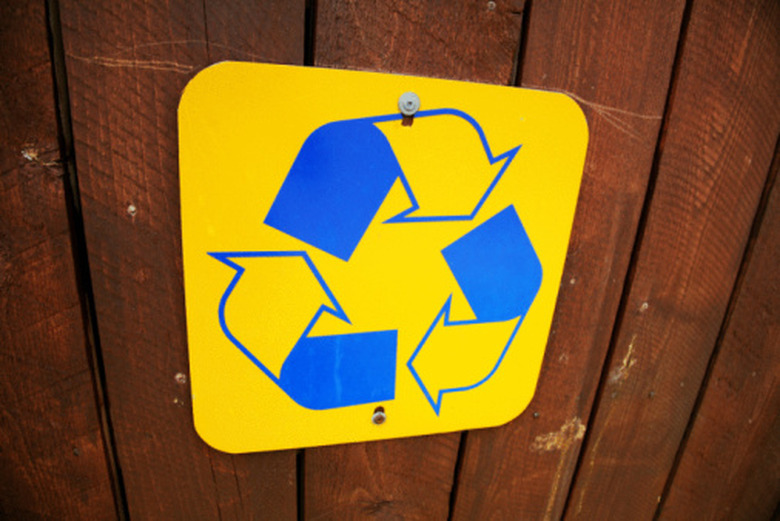Reuse, Reduce & Recycle Science Projects
There is an abundance of science projects that can be made with the reuse, reduce and recycled theme in mind. Creating a project with recycled items allows you to help save the Earth's environment while learning about important scientific properties. If you're looking for ideas for projects that make use of reused, reduced and recycled materials, there is a variety of them suitable for every grade and skill level.
Kindergarten -- Recycled Cup Phone
Kindergarten — Recycled Cup Phone
Poke holes in the bottom center of two recycled paper cups to begin making a paper cup phone. Thread a single string through the bottom of both cups and tie a knot in the ends to keep the string from coming out. Let children play with their new, environmentally friendly phones.
Elementary -- Plant Dye Painting
Elementary — Plant Dye Painting
Slow cook spinach, beets, dry onion skins and shelled black walnuts in separate crock pots with just enough water to cover the plants. If doing this in class, it's a good idea to put the plants on in the morning before students come in and let them cook throughout the day. The water should turn into natural dye that can be used for painting. Give students a blank sheet of paper and paint brush and let them paint a picture with the natural dye.
Middle School -- Plastic Bottle Thermometer
Middle School — Plastic Bottle Thermometer
Make a thermometer using recycled plastic water or soda bottles and clear straws. You will also need rubbing alcohol, modeling clay and food coloring. Fill a quarter of the bottle with equal parts of rubbing alcohol and tap water and add two drops of food coloring. Insert the straw and use the modeling clay to seal the top of the bottle leaving the straw sticking out of the top of the clay. Hold the bottle in your hands and watch the liquid move up the straw as the bottle warms up.
High School -- DNA Model
High School — DNA Model
Make three dimensional DNA models using recycled aluminum cans and plastic bottles. Give high school students a worksheet showing the DNA double helix structures and instruct them to use their recycled materials to duplicate the structures. This will help students further understand the replication of DNA and force them to work together to explore other scientific properties.
Cite This Article
MLA
Young, Rayzelle Forrest. "Reuse, Reduce & Recycle Science Projects" sciencing.com, https://www.sciencing.com/reuse-reduce-recycle-science-projects-7983878/. 24 April 2017.
APA
Young, Rayzelle Forrest. (2017, April 24). Reuse, Reduce & Recycle Science Projects. sciencing.com. Retrieved from https://www.sciencing.com/reuse-reduce-recycle-science-projects-7983878/
Chicago
Young, Rayzelle Forrest. Reuse, Reduce & Recycle Science Projects last modified August 30, 2022. https://www.sciencing.com/reuse-reduce-recycle-science-projects-7983878/
